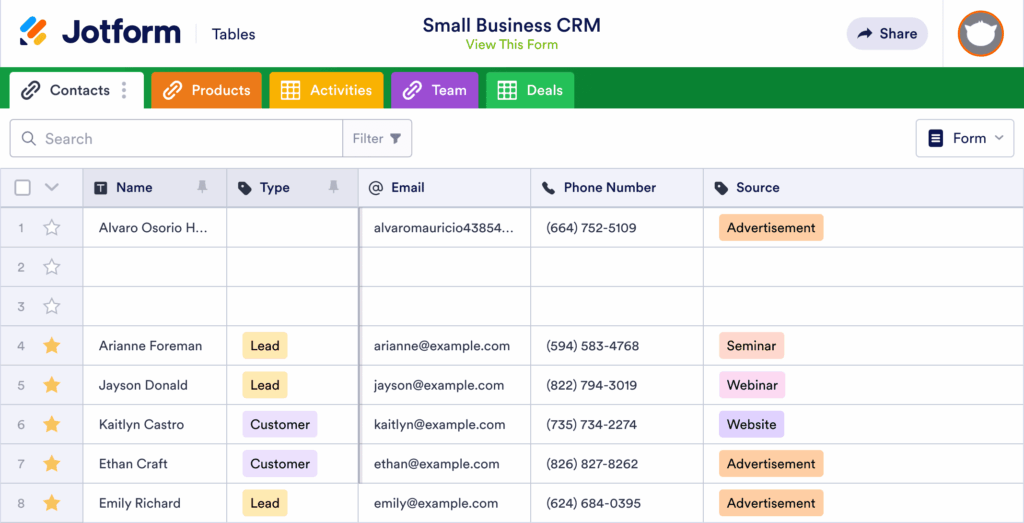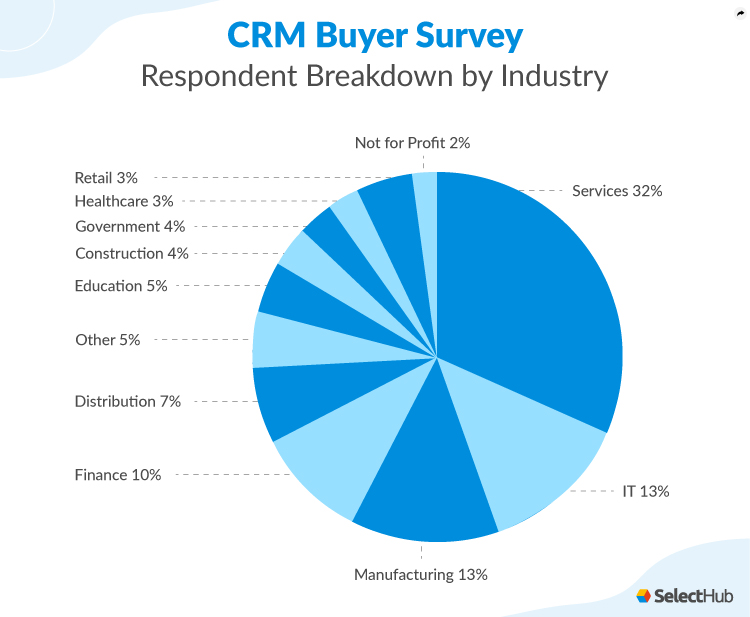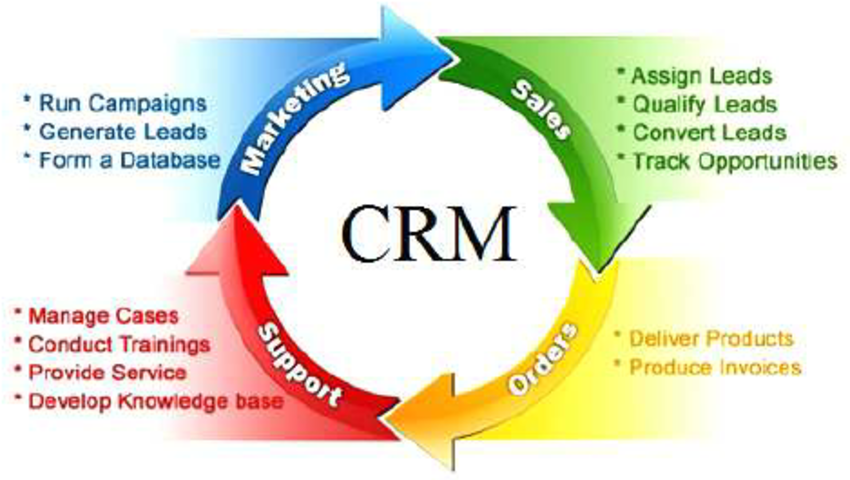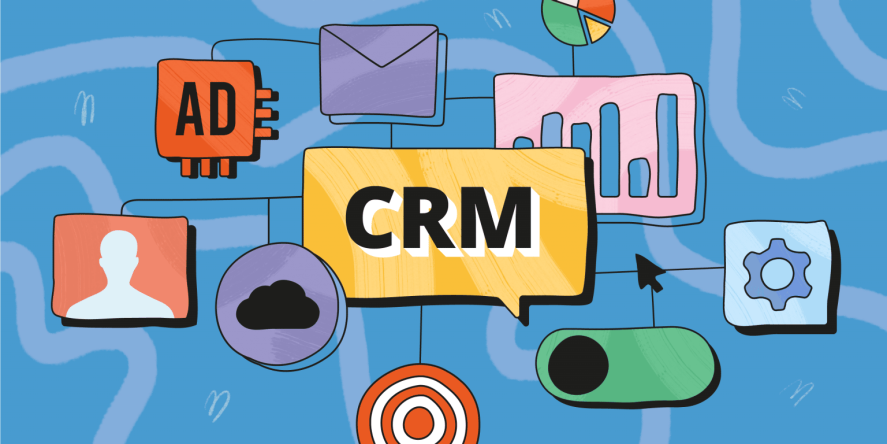Small Business CRM Checklist: Your Ultimate Guide to Choosing, Implementing, and Thriving

Navigating the CRM Maze: Why Your Small Business Needs a CRM
Alright, let’s be real. Running a small business is like juggling flaming chainsaws while riding a unicycle. You’re constantly spinning plates, trying to keep everything in the air. One of the most critical plates to keep spinning, and spinning *well*, is customer relationships. That’s where a Customer Relationship Management (CRM) system comes in. Think of it as your digital assistant, your relationship guru, your secret weapon for building lasting customer connections.
But why is a CRM so crucial, especially for a small business? Well, in the early days, you might be able to keep track of everything in your head, or maybe a spreadsheet. But as you grow, that approach becomes a recipe for disaster. Customers get forgotten, opportunities slip through the cracks, and your business suffers. A CRM solves these problems by:
- Centralizing Customer Data: No more scattered information. Everything – contact details, communication history, purchase history – is in one place.
- Improving Communication: Easily track interactions, personalize your outreach, and ensure no customer feels ignored.
- Boosting Sales: Identify leads, nurture them effectively, and close more deals.
- Enhancing Customer Service: Provide faster, more efficient support, leading to happier customers.
- Streamlining Processes: Automate tasks, saving you time and allowing you to focus on what matters most – growing your business.
This checklist will guide you through the entire CRM journey – from deciding if you even need one, to choosing the right system, implementing it successfully, and finally, reaping the rewards of stronger customer relationships and a thriving business.
Part 1: Assessing Your Needs – The Pre-CRM Checklist
Before you dive headfirst into the world of CRMs, take a moment to assess your current situation. This pre-CRM checklist helps you understand your needs and set realistic expectations. It’s like taking your temperature before you start a workout – you need to know where you stand!
1. Define Your Business Goals
What are you trying to achieve? Are you aiming to increase sales, improve customer retention, or streamline your marketing efforts? Your CRM goals should align with your overall business objectives. Be specific. For example, instead of “increase sales,” aim for “increase sales by 15% in the next quarter.”
- Actionable Steps:
- List 3-5 key business goals.
- Quantify each goal (e.g., increase revenue by X%, reduce churn by Y%).
2. Analyze Your Current Customer Management Processes
How do you currently manage customer interactions? Do you use spreadsheets, email, or a combination of tools? What are the pain points? Identify the inefficiencies and areas for improvement. This analysis will inform your CRM requirements.
- Actionable Steps:
- Document your current customer management processes.
- Identify bottlenecks and inefficiencies.
- List the tools you currently use (e.g., Gmail, Excel, etc.).
3. Identify Your Target Audience
Who are your ideal customers? Understanding your target audience helps you tailor your CRM strategy and personalize your interactions. Consider demographics, psychographics, and buying behavior.
- Actionable Steps:
- Create customer personas (e.g., “Marketing Manager Mary,” “Small Business Owner Bob”).
- Define their needs, pain points, and buying preferences.
4. Determine Your Budget
CRMs come in various price points. Set a realistic budget, considering both the software costs and the potential costs of implementation, training, and ongoing maintenance. Remember that the cheapest option isn’t always the best – consider the features and scalability that align with your goals.
- Actionable Steps:
- Research the pricing models of different CRM providers.
- Allocate funds for software, implementation, training, and any additional services.
5. Assess Your Team’s Technical Skills
How tech-savvy is your team? Choose a CRM that aligns with their skill level. Some systems are user-friendly and require minimal training, while others are more complex and may require dedicated IT support.
- Actionable Steps:
- Evaluate your team’s familiarity with CRM software and related technologies.
- Consider the need for training and support.
Once you’ve completed this pre-CRM checklist, you’ll have a solid foundation for making informed decisions about your CRM strategy.
Part 2: Choosing the Right CRM – The Selection Checklist
Choosing a CRM is like picking a partner – you want someone who’s a good fit! This selection checklist will help you evaluate different options and find the perfect match for your small business.
1. Define Your Must-Have Features
Based on your needs assessment, create a list of essential features. What functionalities are non-negotiable? Consider your sales, marketing, and customer service requirements. Examples include lead management, contact management, email marketing integration, and reporting.
- Actionable Steps:
- List the must-have features based on your business goals and processes.
- Prioritize features based on their importance.
2. Research CRM Providers
Explore the market and identify potential CRM providers. Look for vendors that cater to small businesses and offer the features you need. Read reviews, compare pricing, and consider the vendor’s reputation and customer support.
- Actionable Steps:
- Create a shortlist of potential CRM providers (e.g., HubSpot, Zoho CRM, Pipedrive, etc.).
- Research each provider’s features, pricing, and customer reviews.
3. Evaluate Key CRM Features
Dive deeper into the features of each shortlisted CRM. Does it offer the functionality you need? Does it integrate with your existing tools (e.g., email, accounting software, social media)? Does it offer the level of customization you require?
- Actionable Steps:
- Compare the features of each CRM against your must-have list.
- Assess the integration capabilities with your existing tools.
- Evaluate the ease of use and customization options.
4. Consider Scalability
Choose a CRM that can grow with your business. Will it be able to handle your increasing customer base, data volume, and evolving needs? Ensure that the CRM can accommodate future expansion.
- Actionable Steps:
- Assess the CRM’s scalability in terms of users, data storage, and feature expansion.
- Consider your projected growth over the next few years.
5. Assess the User Interface (UI) and User Experience (UX)
A user-friendly CRM is crucial for adoption. Is the interface intuitive and easy to navigate? Does it offer a positive user experience? A clunky or confusing CRM will lead to frustration and low user adoption rates.
- Actionable Steps:
- Test the CRM’s interface and evaluate its ease of use.
- Consider the learning curve for your team.
6. Evaluate Pricing and Support
Compare the pricing models of different CRMs. Understand the features included in each plan and assess the value for money. Also, evaluate the level of customer support offered by the provider. Is support readily available? Are there training resources?
- Actionable Steps:
- Compare the pricing plans of each CRM provider.
- Assess the quality and availability of customer support and training resources.
7. Try Before You Buy – Request Demos and Trials
Before committing to a CRM, request demos and free trials. This allows you to test the system, explore its features, and see if it’s a good fit for your team. Don’t be afraid to get your hands dirty and play around with the software!
- Actionable Steps:
- Request demos from your shortlisted CRM providers.
- Sign up for free trials and test the system with your own data.
8. Check for Integrations
Your CRM needs to play well with your existing tools. Does it integrate with your email marketing platform, accounting software, and other essential business applications? Seamless integration streamlines your workflow and eliminates the need for manual data entry.
- Actionable Steps:
- Identify the tools you need to integrate with your CRM.
- Check the CRM’s integration capabilities with those tools.
9. Read Reviews and Case Studies
Learn from the experiences of other small businesses. Read online reviews and case studies to get insights into the CRM’s strengths and weaknesses. See how other companies have used the CRM to achieve their goals.
- Actionable Steps:
- Search for online reviews and case studies for each CRM.
- Pay attention to the experiences of businesses similar to yours.
10. Make a Decision
After careful consideration, make your decision! Choose the CRM that best aligns with your needs, budget, and team’s technical skills. Don’t overthink it, but be sure to weigh the pros and cons of each option.
- Actionable Steps:
- Rank your shortlisted CRMs based on your evaluation.
- Make your final decision based on the factors that are most important to your business.
By following this selection checklist, you’ll be well-equipped to choose the CRM that will empower your small business to thrive.
Part 3: Implementing Your CRM – The Implementation Checklist
Choosing the right CRM is only half the battle. Successful implementation is key to unlocking its full potential. This implementation checklist will guide you through the process, ensuring a smooth transition and maximizing your CRM’s impact.
1. Plan Your Implementation
Before you start, create a detailed implementation plan. Define the scope, timelines, and resources required. Assign roles and responsibilities to your team members. A well-defined plan minimizes disruptions and ensures a successful rollout.
- Actionable Steps:
- Define the scope of your CRM implementation.
- Create a project timeline with key milestones.
- Assign roles and responsibilities to your team members.
2. Data Migration
Transferring your existing customer data to the new CRM is a crucial step. Clean and organize your data before migration to ensure accuracy. Consider the data fields, formats, and any necessary transformations. If you have a large dataset, consider using a data migration tool or seeking professional help.
- Actionable Steps:
- Clean and organize your existing customer data.
- Map data fields from your old system to the new CRM.
- Choose a data migration method (manual, automated, or with a third party).
3. Customize Your CRM
Tailor your CRM to fit your specific business needs. Customize the fields, workflows, and reports to align with your processes. This ensures that the CRM works *for* you, not the other way around. Don’t be afraid to experiment and iterate on your configurations.
- Actionable Steps:
- Customize the CRM’s fields, layouts, and workflows.
- Create custom reports to track key metrics.
- Configure user roles and permissions.
4. Train Your Team
Provide comprehensive training to your team members. Equip them with the knowledge and skills they need to use the CRM effectively. Offer hands-on training, tutorials, and ongoing support. User adoption is critical for success, so invest in training to ensure your team feels confident and comfortable using the system.
- Actionable Steps:
- Develop a training plan for your team.
- Provide hands-on training and tutorials.
- Offer ongoing support and resources.
5. Test and Refine
Thoroughly test the CRM before going live. Verify that data migration was successful, workflows are functioning correctly, and reports are accurate. Gather feedback from your team and make any necessary adjustments. Continuous improvement is key.
- Actionable Steps:
- Test the CRM’s functionality and data accuracy.
- Gather feedback from your team.
- Make any necessary adjustments and refinements.
6. Go Live and Monitor
Once you’re confident in your CRM, go live! Monitor the system closely after launch. Track user adoption, identify any issues, and provide ongoing support. Be prepared to make further adjustments as needed. Consider a phased rollout, starting with a pilot group before launching to your entire team.
- Actionable Steps:
- Launch the CRM to your team.
- Monitor user adoption and identify any issues.
- Provide ongoing support and training.
7. Integrate with Other Tools
Integrate your CRM with other business tools, such as email marketing platforms, accounting software, and social media channels. Integration streamlines your workflow and creates a more connected ecosystem. This ensures that all of your customer data is synchronized and readily available.
- Actionable Steps:
- Identify the tools you need to integrate with your CRM.
- Configure the integrations.
- Test the integrations to ensure they are working correctly.
8. Establish a Data Governance Policy
Define policies and procedures for data management, security, and privacy. This protects your customer data and ensures compliance with relevant regulations. Data governance is an ongoing process, not a one-time task. Regularly review and update your policies as needed.
- Actionable Steps:
- Develop a data governance policy.
- Define data security protocols and access controls.
- Comply with relevant data privacy regulations (e.g., GDPR, CCPA).
9. Measure and Analyze
Track key metrics to measure the success of your CRM implementation. Analyze the data to identify areas for improvement and optimize your CRM strategy. Regularly review your progress and make adjustments as needed. This is an iterative process, so don’t be afraid to experiment.
- Actionable Steps:
- Track key CRM metrics (e.g., sales, customer satisfaction, etc.).
- Analyze the data to identify areas for improvement.
- Optimize your CRM strategy based on your findings.
By following this implementation checklist, you’ll be well on your way to a successful CRM deployment that boosts your small business’s efficiency and customer relationships.
Part 4: Maximizing Your CRM – The Optimization Checklist
You’ve chosen a CRM, implemented it, and now you’re ready to get the most out of it. This optimization checklist will help you fine-tune your CRM strategy and ensure you’re leveraging its full potential.
1. Regularly Review and Update Data
Keep your customer data clean, accurate, and up-to-date. Implement processes for regular data cleansing and validation. Inaccurate data leads to ineffective communication and missed opportunities. Set aside dedicated time for data maintenance.
- Actionable Steps:
- Establish a data cleansing schedule (e.g., monthly, quarterly).
- Review and update contact information, preferences, and other key data.
- Remove duplicate or outdated records.
2. Utilize Automation
Automate repetitive tasks to save time and improve efficiency. Leverage workflows to automate lead nurturing, follow-up emails, and other routine processes. Automation frees up your team to focus on more strategic activities.
- Actionable Steps:
- Identify repetitive tasks that can be automated.
- Set up automated workflows for lead nurturing, follow-up emails, and other processes.
- Monitor the performance of your automated workflows.
3. Personalize Your Communication
Tailor your communication to each customer’s individual needs and preferences. Use the data in your CRM to personalize emails, offers, and interactions. Personalized communication builds stronger relationships and increases engagement. Use segmentation to target specific customer groups.
- Actionable Steps:
- Segment your customer base based on demographics, behavior, and preferences.
- Personalize your emails, offers, and other communications.
- Use dynamic content to tailor your messages to individual customers.
4. Track Key Performance Indicators (KPIs)
Monitor key performance indicators (KPIs) to measure the success of your CRM strategy. Track metrics such as sales, customer satisfaction, lead conversion rates, and marketing ROI. Regularly review your KPIs and make adjustments as needed. Data-driven decision-making is crucial.
- Actionable Steps:
- Define the key performance indicators (KPIs) that are most important to your business.
- Track your KPIs regularly.
- Analyze your data and identify areas for improvement.
5. Leverage Reporting and Analytics
Use the CRM’s reporting and analytics features to gain insights into your customer behavior and sales performance. Generate reports to identify trends, track progress, and make data-driven decisions. Reporting helps you understand what’s working and what’s not.
- Actionable Steps:
- Generate reports on sales, marketing, and customer service performance.
- Analyze the data to identify trends and patterns.
- Use the insights to improve your CRM strategy.
6. Integrate with Social Media
Connect your CRM with your social media channels to gain a 360-degree view of your customers. Track social media interactions, monitor brand mentions, and engage with customers in real-time. Social media integration provides valuable insights into customer sentiment.
- Actionable Steps:
- Connect your CRM with your social media channels.
- Track social media interactions and monitor brand mentions.
- Engage with customers in real-time.
7. Provide Ongoing Training and Support
Ensure your team is up-to-date on the latest CRM features and best practices. Provide ongoing training and support to maximize user adoption and effectiveness. Consistent learning is key to success.
- Actionable Steps:
- Provide ongoing training and support to your team.
- Share best practices and tips for using the CRM effectively.
- Encourage your team to explore new features and functionalities.
8. Stay Updated with CRM Updates
Keep your CRM software up-to-date with the latest updates and features. Vendors regularly release new versions with bug fixes, performance improvements, and new functionalities. Staying current ensures you’re taking advantage of the latest advancements.
- Actionable Steps:
- Install the latest updates and patches for your CRM software.
- Review the release notes to understand the new features and improvements.
- Train your team on any new functionalities.
9. Seek Feedback and Iterate
Regularly solicit feedback from your team and customers. Use this feedback to identify areas for improvement and optimize your CRM strategy. Iterate on your processes and configurations to maximize the value of your CRM.
- Actionable Steps:
- Gather feedback from your team and customers.
- Identify areas for improvement.
- Iterate on your CRM strategy and configurations.
10. Embrace Continuous Improvement
CRM optimization is an ongoing process. Continuously review your strategy, track your progress, and make adjustments as needed. Embrace a culture of continuous improvement to get the most out of your CRM and build lasting customer relationships.
- Actionable Steps:
- Regularly review your CRM strategy.
- Track your progress and measure your results.
- Make adjustments as needed.
By following this optimization checklist, you’ll be well-equipped to maximize the value of your CRM and build stronger customer relationships.
Conclusion: Your CRM, Your Success
Congratulations! You’ve navigated the CRM checklist, from assessing your needs to implementing and optimizing your system. Remember, a CRM is more than just software; it’s a strategic investment in your business’s future. By embracing the principles outlined in this guide, you can transform your customer relationships, streamline your operations, and achieve sustainable growth. So, go forth, implement, optimize, and watch your small business thrive!



